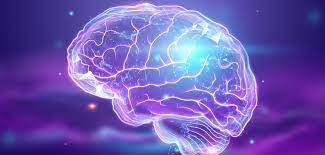
By 3D printing human stem cells, researchers have created an artificial tissue that resembles a condensed cerebral cortex. The structures merged with the host tissue when inserted into mouse brain slices.
The ground-breaking method created by University of Oxford researchers may one day offer specialized fixes for those who sustain brain damage. For the first time, the researchers showed that neuronal cells may be 3D printed to resemble the cerebral cortex’s structure.
The cerebral cortex, or outer layer of the brain, is frequently severely damaged in brain injuries, including those brought on by trauma, stroke, and surgery for brain tumors. This causes problems with cognition, movement, and communication. For instance, 5 million cases of traumatic brain injury (TBI), which affects around 70 million people annually worldwide, are severe or deadly. For severe brain injuries, there are currently no effective treatments, which has a significant impact on quality of life.
Future treatments for brain injuries may involve tissue regenerative therapies, particularly those in which patients receive implants made from their own stem cells. However, there is currently no way to guarantee that implanted stem cells mimic the architecture of the brain.
In this latest development, Oxford University scientists used 3D printing to create a two-layered brain tissue. The cells convincingly integrated structurally and functionally into mouse brain slices after implantation.
“This development marks a significant step towards the fabrication of materials with the full structure and function of natural brain tissues,” said lead scientist Dr. Yongcheng Jin (Department of Chemistry, University of Oxford). The research will offer a rare chance to investigate the functioning of the human cortex and, in the long run, it will give people with brain injuries hope.
Human induced pluripotent stem cells (hiPSCs), which have the capacity to produce the cell types present in the majority of human tissues, were used to create the cortical structure. Utilizing hiPSCs for tissue repair has the major benefit of being easily produced from patient-derived cells, which prevents the elicitation of an immune response.
By combining particular growth factors and chemicals, the hiPSCs were converted into neural progenitor cells for two separate layers of the cerebral cortex. A two-layered structure was created by printing two “bioinks” made from the suspended cells in solution. The production of layer-specific biomarkers showed that the printed tissues retained their layered cellular architecture in culture for weeks.
The projection of neuronal processes and the migration of neurons across the implant-host border showed that the printed tissues had a robust integration when they were implanted into mouse brain slices. The signaling activity of the implanted cells was likewise associated with that of the host cells. This demonstrates that the mouse and human cells were in communication with one another.
The goal of the current research is to improve the droplet printing method in order to produce intricate, multi-layered cerebral cortex tissues that more closely resemble the structure of the human brain. These created tissues may be employed in drug testing, research on brain development, and to better our understanding of the neural underpinnings of cognition in addition to their potential for healing brain injuries.
The latest development continues the team’s ten-year history of developing and patenting 3D printing technology for synthetic tissues and cultivated cells.
“Our droplet printing technique provides a means to engineer living 3D tissues with desired architectures, which brings us closer to the creation of personalized implantation treatments for brain injury,” said senior author Dr. Linna Zhou .
Associate Professor Francis Szele, the study’s senior author, from the University of Oxford’s Department of Physiology, Anatomy, and Genetics added: “The use of living brain slices creates a powerful platform for interrogating the utility of 3D printing in brain repair.” It is a logical link between researching the development of 3D-printed cortical columns in culture and their integration into the injured brains of animals.
Human brain development is a delicate and sophisticated process with a complex choreography, according to senior author Professor Zoltán Molnár (Department of Physiology, Anatomy and Genetics, University of Oxford). To believe that we can simulate the full biological development in a lab setting would be naive. However, our 3D printing project shows significant advancements in managing the arrangements and destinies of human iPSCs to create the functional units of cerebral cortex.
This futuristic endeavor could only have been accomplished by the highly multidisciplinary conversations urged by Oxford’s Martin School, involving both Oxford’s Department of Chemistry and the Department of Physiology, Anatomy, and Genetics, according to senior author Professor Hagan Bayley (Department of Chemistry, University of Oxford).

